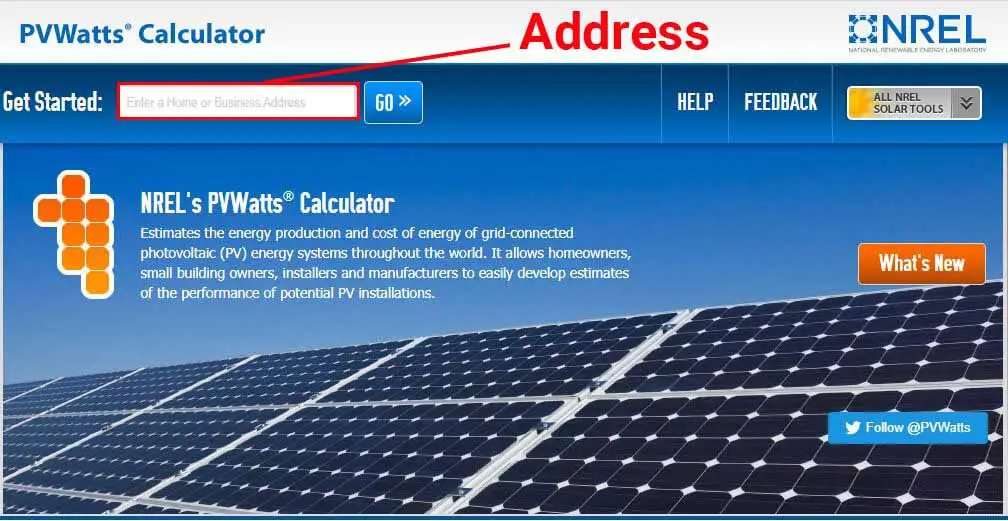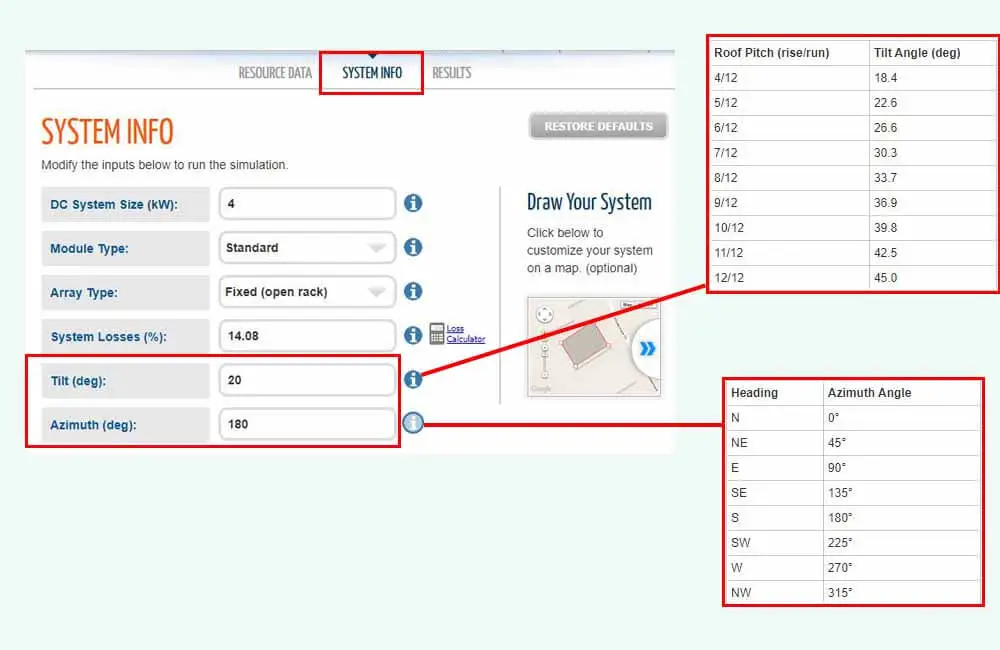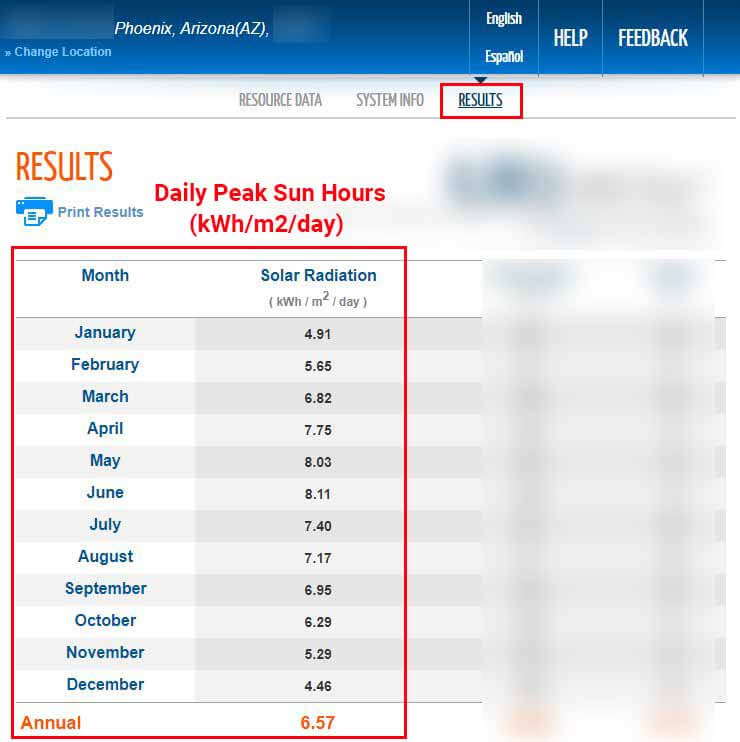Assuming you want to charge the battery on a daily basis, there are a couple of factors that determine the amount of solar power needed to charge a 100Ah battery:
- The amount of energy (in Watt-hours) that you take out of the battery on a daily basis.
- The type of solar charge controller you’re using and the efficiency that comes with that.
- The average amount of sunlight (Peak Sun Hours) that your solar panels will have access to.
After reading this article, and following a few steps, you’ll understand what these factors mean and learn how to determine them. You’ll then be able to use the values that you’ve determined to estimate the size of solar panels that you need to charge your 100Ah battery.
Let’s get to it.
What size solar panel to charge 100ah battery?
As a rule of thumb, you would need 200 to 300 watts of solar power to fully charge an empty 12V-100Ah battery in 8 to 10 hours. To fully charge an empty 24V-100Ah battery in 8 to 10 hours, you would need 400 to 600 Watts of solar panels.
If you’re not planning on depleting the battery every single day, you would need less solar power.
For example, if you have a 12V-100Ah battery (1200Wh rated capacity), and you only need to use 50% of that rated capacity (600Wh) each day, you would only need 100 to 150 Watts of solar.
So, in order to determine how much solar power you need to charge your 100Ah battery, we would first need to determine how much energy the solar panels will have to offset on a daily basis.
Then we could use the average amount of sunlight that your solar panels would receive each day to calculate the amount of solar power that you need.
To make this as comprehensive as possible, we’re going to divide this process into 3 simple steps:
- Step 1: In this first step, we’ll try and estimate the average amount of energy (in Watt-hours) that you take out of the battery each day.
- Step 2: In the 2nd step, we’ll take into consideration the efficiency and losses of the system. The less efficient system is, the more energy the solar panels are required to produce.
- Step 3: In the last step, I’ll show you how to make use of historical data to, first determine the average amount of sunlight your solar panels will have access to, and then use that to calculate the size of the solar panel (or array of panels) that you need.
After reading the rest of this article, you’ll know exactly how much solar power you’ll need.
Let’s begin with the first step.
Step 1: How much energy do you take out of your 100Ah battery each day?
Electrical Energy is conventionally measured in Watt-hours (Wh) or kiloWatt-hours (kWh). 1kWh is equivalent to 1000Wh.
When a manufacturer rates a battery at a certain Voltage (12V for example), and a certain Charge Capacity (100Ah for example), they implicitly also provide the Electrical Energy Capacity of the battery, or how much Electrical Energy the battery can store.
For example, if a battery is rated at 12V-100Ah, its Rated Energy Capacity can be calculated as such:
Rated Energy Capacity (Watt-hours) = Rated Battery Voltage (Volts) x Rated Charge Capacity (Amp-hours)
Rated Energy Capacity (Watt-hours) = 12V x 100Ah
Rated Energy Capacity (Watt-hours) = 1200Wh
So, if you usually start up the day with a full battery (100% State Of Charge) and end it with an empty battery (0% State Of Charge), the amount of energy that you usually consume each day is equivalent to the Energy Capacity of the battery.
For example, if your battery is rated at 12 Volts and 100 Amp-hours, taking the battery from a full state of charge to a 0% state of charge, would mean that you’ve consumed 1200 Watt-hours of energy.
If the battery is rated at 24V-100Ah and it’s fully charged, depleting it would mean that you’ve consumed 2400 Watt-hours of energy.
Therefore, if you want the solar panels to be able to fully charge your 100Ah battery every single day even if the battery is completely depleted, you should assume that your daily energy consumption is equal to the Energy Capacity of your battery.
However, if you suspect that your daily energy consumption is lower than your battery’s energy capacity, and you don’t want to use more solar panels than you have to, you can still estimate that energy consumption without using the capacity of your battery as a reference.
This can be done by:
- Listing the appliances that you usually use every day.
- Determining the Power Usage of each of these appliances (in Watts).
- Determining the average number of hours that you’re going to use each of these appliances each day.
After you do this, you can estimate the daily amount of energy that each of these appliances requires as such:
Daily Energy Consumption of the appliance (Watt-hours) = Rated Wattage (Watts) x Daily Usage Time (hours)
Then you can add all of them together to estimate your daily energy consumption.
For example, let’s say you’re trying to run a 32″ LED TV, a light bulb, and a fan on your 100Ah battery. Let’s also make the following assumptions:
- TV is rated 40 Watts of power, and runs for 5 hours a day.
- Light bulb rated at 50 Watts of power and stays on for 8 hours a day.
- Fan rated at 40 Watts of power and runs for 4 hours a day.
Related: How many watts does a TV use?
Using these pieces of information, we can calculate the daily energy consumption of our appliances:
Daily Energy Consumption of the TV (Watt-hours) = 40 Watts x 5 hours = 200 Watt-hours
Daily Energy Consumption of the light bulb (Watt-hours) = 50 Watts x 8 hours = 400 Watt-hours
Daily Energy Consumption of the fan (Watt-hours) = 40 Watts x 4 hours = 160 Watt-hours
If we add all of these together, we get our total daily energy consumption:
Total Daily Energy Consumption (Watt-hours) = 200Wh + 400Wh + 160Wh = 760 Watt-hours
The wattage rating of your appliances is usually indicated somewhere on the appliance. If you can’t find the power rating in Watts, you can use the Voltage and Amperage ratings of the device to determine its Wattage:
Power Rating (Watts) = Rated Voltage (Volts) x Rated Amperage (Amps)
Now, what we’ve just calculated is the amount of energy that you’ll be taking out of the battery every day. But what we’re really looking for is the amount of energy that our solar panels need to generate on a daily basis.
But, what’s the difference?
Well, the solar panels will charge the battery through a solar charge controller, and these devices are not perfectly efficient and there will be losses.
In other words, not all of the energy the solar panels generate makes it into the battery, and we need to estimate this inefficiency in order to factor it into our calculations.
This brings us to the 2nd step.
Step 2: How efficient is your system?
The efficiency of a system is calculated by dividing the output by the input. If you know how efficient the system is, and you know what the required output is, you can calculate the required input.
In our particular case, the system is whatever is between the solar panels and the battery, the input is the daily energy production of the solar panels, and the output is the energy that makes it to the battery (daily energy consumption).
The relationship between these 3 components can be represented via the following formula:
Required Daily Energy Production (Watt-hours) = Daily Energy Consumption (Watt-hours) ÷ Efficiency (%)
In the previous section, we discussed energy consumption, so what we need to determine now is efficiency.
As mentioned above, solar panels charge batteries through a solar charge controller, and these three components and connected together through wires and fuses/circuit breakers.
Wires are also inefficient, but for the sake of simplicity, we’ll just focus on the efficiency of the solar charge controller.
Now, there are 2 types of charge controllers in the market, and the efficiency of a solar charge controller will mainly depend on the type you’re using:
- PWM solar charge controllers: these charge controllers are cheaper but are generally only 75% efficient.
- MPPT solar charge controllers: these charge controllers are more expensive but offer an efficiency of around 98%.
These efficiencies are, of course, assuming you’ll be using the right solar charge controller size. To make sure your solar charge controller is sized correctly, feel free to use our calculators:
So, if you’ll be using a PWM, your 100Ah battery is – on average – only going to receive 75% of the energy your solar panels produce. If you’ll be using an MPPT charge controller, your battery will receive 98% of that energy.
For example, let’s say that we’ve determined that we’ll be taking out 760Wh of energy from our battery each day. Let’s also assume we’ll be using a PWM charge controller (75% efficiency).
The amount of energy that our solar panels need to produce each day can be calculated as such:
Required Daily Energy Production (Watt-hours) = Daily Energy Consumption (Watt-hours) ÷ Efficiency (%)
Required Daily Energy Production (Watt-hours) = 760 Watt-hours ÷ 75 %
Required Daily Energy Production (Watt-hours) = 760 Watt-hours ÷ 0.75
Required Daily Energy Production (Watt-hours) = 1013 Watt-hours
If we used an MPPT solar charge controller instead, we would need less energy production to offset our energy consumption:
Required Daily Energy Production (Watt-hours) = Daily Energy Consumption (Watt-hours) ÷ Efficiency (%)
Required Daily Energy Production (Watt-hours) = 760 Watt-hours ÷ 98 %
Required Daily Energy Production (Watt-hours) = 760 Watt-hours ÷ 0.98
Required Daily Energy Production (Watt-hours) = 775 Watt-hours
In any case, we now know how to determine the average amount of energy that our solar panels are required to generate on a daily basis.
The next and last step is to determine how big of a solar array we would need to produce that amount of energy.
In the next section, I explain how you can use historical weather data in your location to estimate the amount of solar power that you need.
Step 3: How much sunlight will your solar panels receive (on average)?
The amount of energy that a solar array produces over a certain period of time (1 day for example), can be calculated using:
- The Power Rating of the solar array (300 Watts for example)
- And the amount of Energy per area that the solar array received from the sun over that same period of time (1 day for example).
The latter is measured in kWh/m² (kiloWatt-hours per square meter) and is referred to as Peak Sun Hours (PSH).
For example, if a 200W solar panel receives 5kWh/m² of sunlight energy per day on average, it could be said that the solar panel receives 5 Peak Sun Hours per day on average.
The average daily energy production of our 200W solar panel can then be calculated as such:
Daily Energy Production (Watt-hours) = Power Rating (Watts) x Daily Peak Sun Hours
Daily Energy Production (Watt-hours) = 200 Watts x 5 Peak Sun Hours
Daily Energy Production (Watt-hours) = 1000 Watt-hours
Reversibly, if we instead know how much energy we need to produce each day, and we know the average number of daily Peak Sun Hours that we receive, we can calculate the amount of solar power that we need to produce that energy:
Solar Panel Rating (Watts) = Required Daily Energy Production (Watt-hours) ÷ Daily Peak Sun Hours
In the previous sections, we’ve discussed how you can determine this required daily energy production. What we need to figure out now is how many Peak Sun Hours you get each day on average.
Luckily, you can do this by using the PVWatts Calculator by NREL.
By submitting your address, and a couple of details that describe your setup, you can get access to Peak Sun Hours averages and estimates that you can use in these calculations.
The first step is to go to the Calculator and submit your address:

For example, I’m going to use an address in Pheonix, AZ.
Once you submit your address, the next step is to go to the “System Info” section of the calculator and provide additional information.

At the bottom, you’ll see 2 fields:
Tilt (deg):
This represents the angle at which your solar panels are tilted. If you’re planning on installing your solar panels on a roof, you can click the “i” icon to determine the equivalent of your roof pitch in degrees.
If you don’t know what your roof pitch is, you can use an app such as Measure (for iOS) or Bubble Level (for Android) to determine the tilt angle.
If your solar panels are going to be ground-mounted, simply enter their tilt angle.
Azimuth (deg):
This represents the direction your solar panels will be facing. If you’re going to install the solar panels on a roof, you can use apps such as Commander Compass Go (for iOS) or Azimuth Compass (for Android) to determine the direction that the roof is facing.
If your solar panels are going to be mounted on the ground, the optimal direction for solar panels to face in the U.S (or locations north of the Equator) is South (180 deg Azimuth). For Australia (or locations south of the Equator), an optimal heading would be North (0 deg Azimuth).
Both tilt and Azimuth angles influence the amount of sunlight that a solar panel receives, and therefore, influence their energy production. To learn more about solar panel optimization, please refer to this page: how to increase solar panel output?
The other fields in the “System Info” section are not really relevant in this particular case. So once you submit your tilt and Azimuth angle, go to the “Results” section of the calculator.

In the “Results” section, and in the 2 columns on the left, the PVWatts calculator provides annual and monthly averages of the daily Peak Sun hours that your solar panels receive.
The fewer the Peak Sun Hours, the more solar power you’ll need.
Since these Peak Sun Hours fluctuate throughout the year, if you base your calculations on the annual average value, your solar panels will likely fail to offset your daily energy consumption around winter months like December or January.
So a good idea would be to base the calculations on the lowest Peak Sun Hours value (PSH in December). This will result in a bigger solar array but will ensure your solar panels produce enough energy throughout the year.
If this project is only for a specific season, use the lowest Peak Sun Hours value from that season.
To get a better understanding of this, let’s look at an example.
Example:
For this example, we’ll assume that we’re trying to charge a 12V-100Ah battery, and we’d like the solar panels to be able to charge the battery every single day even if it’s completely depleted.
In this case, our Daily Energy Consumption is 1200Wh.
We’ll also make the assumption that we’re using an MPPT charge controller, which has an efficiency of 98%.
Based on our Daily Energy Consumption (1200Wh), and our MPPT’s efficiency (98%), our Required Daily Energy Production is:
Required Daily Energy Production (Watt-hours) = Daily Energy Consumption (Watt-hours) ÷ Efficiency (%)
Required Daily Energy Production (Watt-hours) = 1200 Watt-hours ÷ 98%
Required Daily Energy Production (Watt-hours) = 1200 Watt-hours ÷ 0.98
Required Daily Energy Production (Watt-hours) = 1224 Watt-hours
So now, we know that our solar panels need to produce 1224 Watt-hours of energy every single day.
Finally, we’ll also assume that we’d like the solar panels to, on average, be able to produce the same amount of energy or more, every day, throughout the year. Therefore, we’ll use the December daily Peak Sun Hours, which are 4.46 Peak Sun Hours per day.
The amount of solar power that we need to charge our 12V-100Ah battery can then be calculated as such:
Solar Panel Rating (Watts) = Required Daily Energy Production (Watt-hours) ÷ Daily Peak Sun Hours
Solar Panel Rating (Watts) = 1224 Watt-hours ÷ 4.46 PSH
Solar Panel Rating (Watts) = 274 Watts
According to these calculations, we would need 274 Watts of solar power. A solar array of this size would consist of 3 100W solar panels wired in Parallel.
Related Topics:
How long will a 100Ah battery last?

